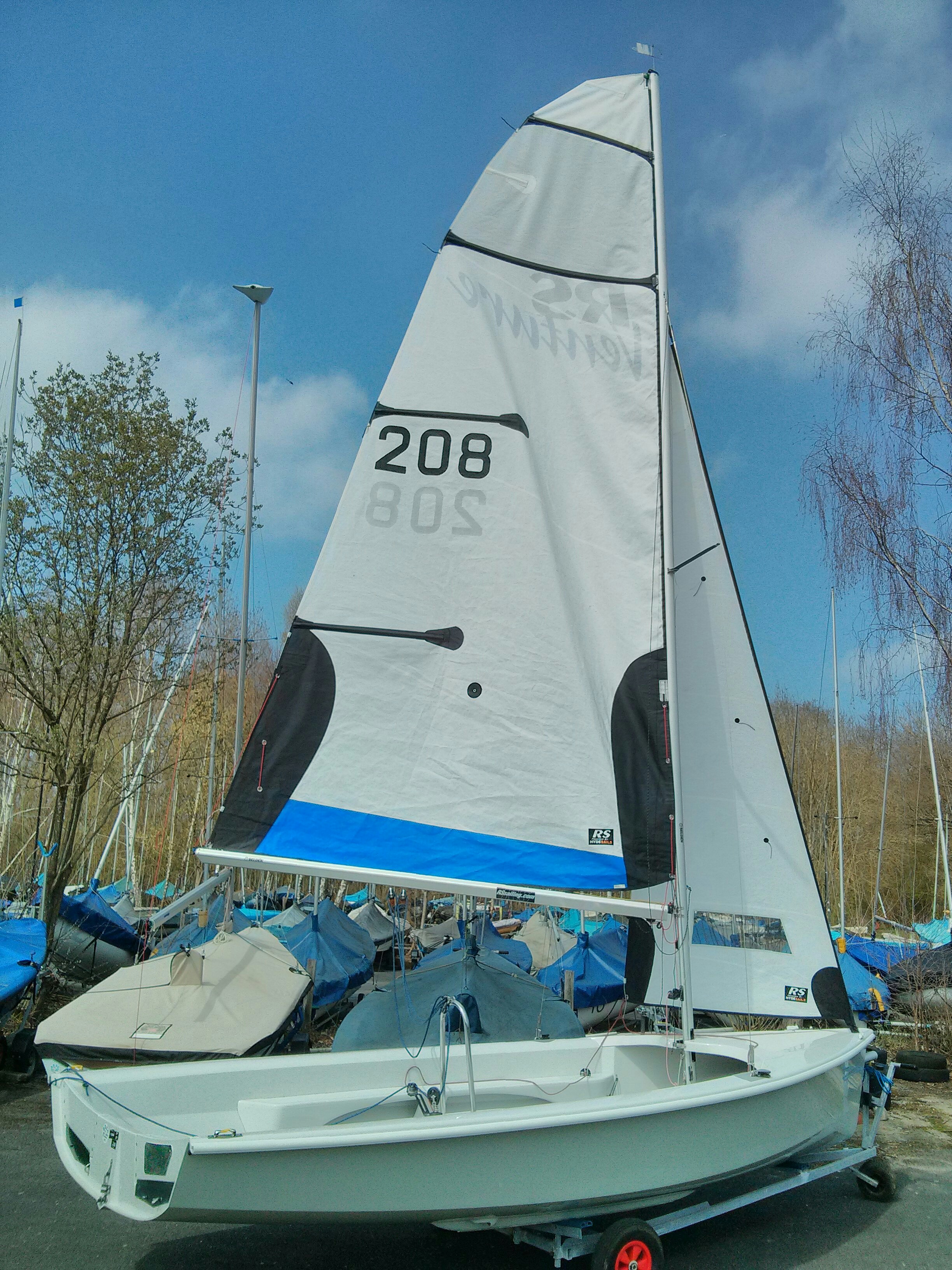Best Practice when Launching the Venture
Preparing the boat
Fully rig the boat in a sheltered spot or boat park away from the wind if possible. There is guidance in this manual on the detailed rigging of all parts of the RS Venture but this section is limited to the actual process of launching, in particular, in potentially difficult conditions.Large dinghies such as the RS Venture require thought and good seamanship to launch in winds above 10-12knots if accidents are to be avoided. Rigging the mainsail is always best done in a sheltered position. Rigging in an exposed position may result in damage to the boat or worse, damage to you. Always turn the bow of the boat into the wind before starting the mainsail rigging no matter what the wind strength. When the rigging has been completed and checked drop the mainsail back into the boat, fan folding the mainsail as you do so to prevent creasing the sail. Make sure the mainsail cannot be lifted out of the boat by the wind, using the rudder as a weight on the folded sail is a good tip. With the gennaker safely stored and the Jib sail furled transport the boat as close to the water as possible prior to sailing.
About to launch
It is good seamanship to trolley the boat as close as possible to the launch point with the mainsail down and the rudder either locked in the up position by its wing nut or better still left in the boat to avoid the rudder being damaged by contact with the ground. Many boats have been damaged and sailors hurt, during windy weather, by leaving the mainsails hoisted when the boat is being transported over a distance to the waters edge. This general advice is even more apposite for a large dinghy like the RS Venture. If the RS Venture is blown over people could be hurt and the boat damaged, to say nothing of the difficulty that would be experienced trying to recover the heavy boat on to its trolley in strong winds.If the decision is taken to rig the mainsail ashore then the boat must be positioned 'bow to wind' as the sail is being raised. It will be extremely difficult to raise the sail with the sail blowing to the side. A strong wind blowing across the launch point will require the boat to be zigzagged backwards and forwards into the water on its trolley, always keeping the bow at no more than 45° to the wind direction to avoid the boat being blown off the trolley. Ideally launch the boat with an assistant holding the bow into the wind, allowing the boat to swing in the wind whilst the helm releases the jib and releases the rudder immediately before sailing.
When holding the boat into the wind the assistant should simply grasp the bottom of the Jib wire and hold it firmly, making no attempt to touch any other part of the boat. It will be necessary for the assistant to move into deeper water if the wind is directly onshore.
Launching into waves
Launching into waves presents difficulties anyway because the boat tends to broach to the waves and may be rolled over. When launching into waves with the added problems of strong winds it is usually good practice to leave the sails down and paddle the boat out to a convenient buoy or anchorage area if available. With the boat moored to the buoy the entire process of raising the sails may be safely done from within the boat thus avoiding the boat being thrown sideways on to the shore or on to the crew standing in the water. In strong winds fastening the rudder to the boat onshore and locking the rudder in the up position is the best practice – if done on the water trying to locate the pintles into the gudgeons whilst leaning over the back of a rocking boat is very difficult. Remember to insert a retaining pin into the pintle just to make sure that the rudder cannot detach from the boat during a capsize. The spring retainers cannot always be trusted to keep the rudder onboard.The person holding the boat bow to wind may struggle if the water depth prevents a secure foothold. However in no circumstances should that person move to the shore / leeward side of the boat to try to hold it steady. Wind and waves could easily cause the boat to be thrown onto the person knocking them down and potentially causing serious injury.
As an aside - when coming ashore the first person out should always jump out on the windward side of the boat, avoiding the temptation to jump out into shallower water. This ensures that the boat can be held more securely and importantly is not blown on to the person, inevitably knocking them down!
